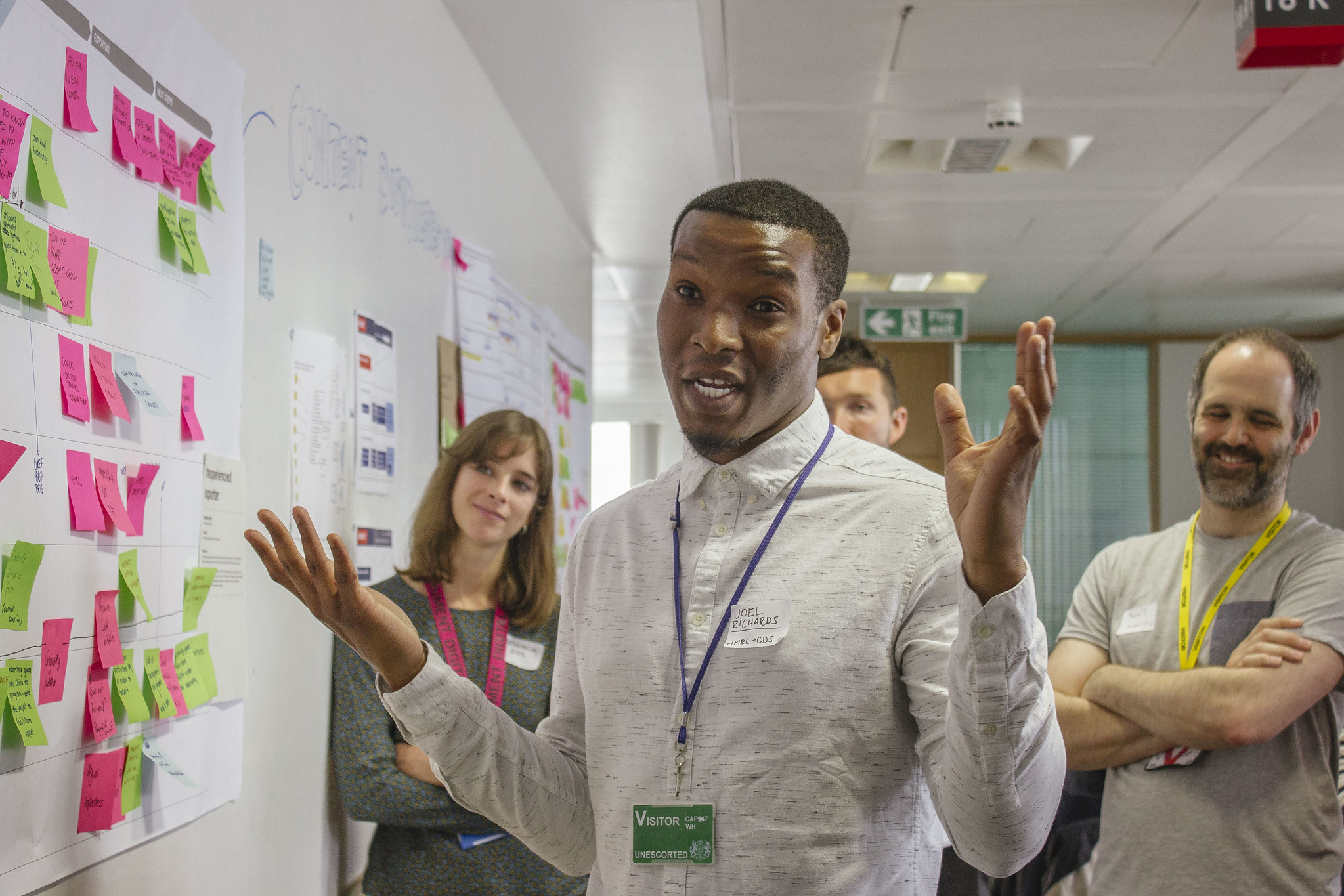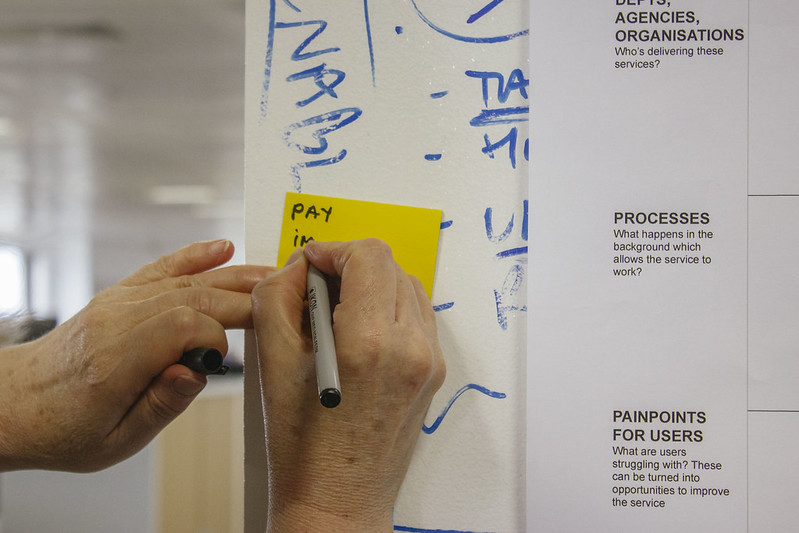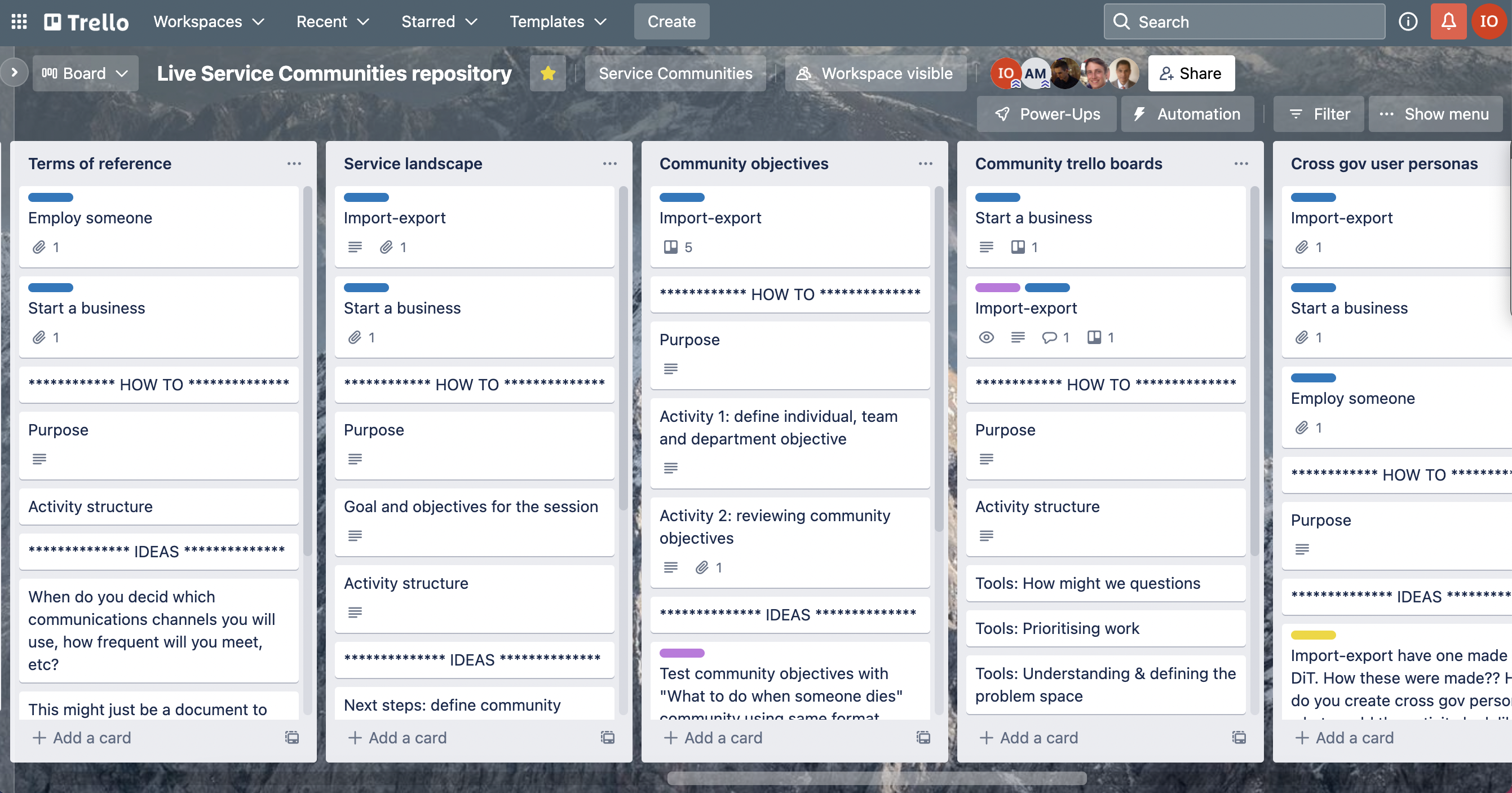Enabling people to set up cross government service communities
by Ignacia
Context
A service community is a network of people from across the public sector who work together to design and deliver an end to end service.
These were set up in 2017 as a response to the siloed way in which government is structured and operates, to provide a framework for collaboration that makes it easier to solve common challenges across organisational structures.
It had become harder to support and scale, making GDS a dependency and a blocker to the growth of communities within government. Because of this, a team was set up to develop the thinking.
My role and approach
I supported people to set up service communities across these organisational boundaries and helped scale this approach. As a team, we did this by exploring and researching incentives for collaboration to happen, helping departments sport opportunities to join-up, documenting and sharing best practices.
I co-designed and facilitated cross government workshops for the ‘Start a business’ and ‘Import & Export’ service communities, advocating for user-centered design and bringing together people from policy to delivery and operations.
I also created a repository of artefacts, tools and learnings from the live service communities so the team could identify reusable methods to create good grounds for collaboration on end to end services.
Results
As a result, we reduced the time to set-up service communities and enabled departments to self organise.
The team and I wrote guidance about working across organisational boundaries in the Service Manual, providing ways for teams to meet the new updated Service Standard on solving whole problems for users.
For more on Service Communities:
- Read blog post on How to set up a service community for success: things we’ve learned
- Read blog post on Service landscape maps – a tool for mapping public services
- Watch talk on How to collaborate with other organisations on end-to-end services
Facilitated workshops with the Import-Export cross government service community


Created a repository of tools and activities across the different communities to identify patterns for collaborating across boundaries
